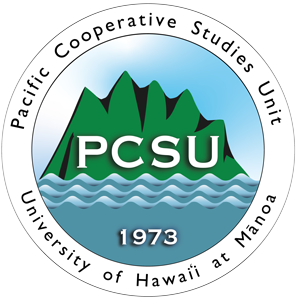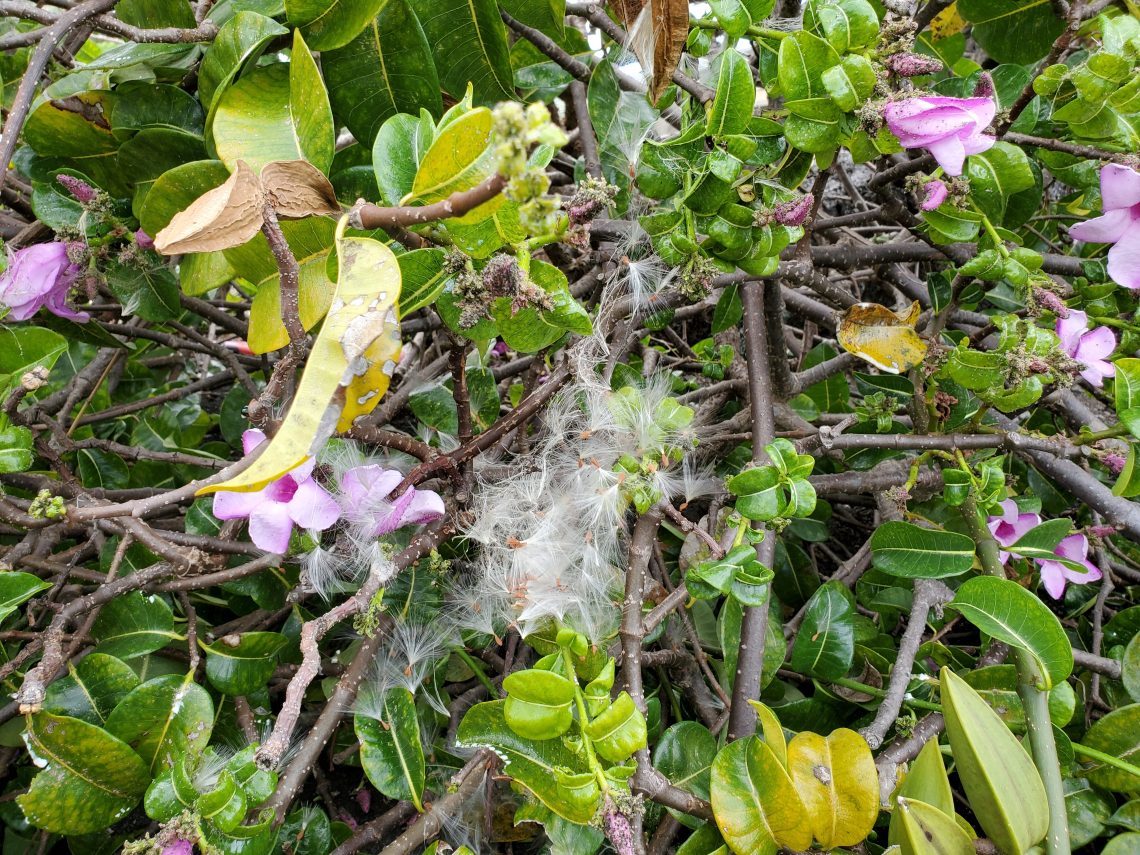
Rubber Vine
REPORT IF SEEN: Contact BIISC to schedule a free removal
Rubber Vine (Cryptostegia madagascariensis) is native to Madagascar. Historically in Australia, it was used as a rubber substitute, hence the common name. Since then, it has taken over vast areas of land. Today it’s a ‛restricted‘ invasive plant, illegal to grow, sell, or give away in that country.
In 1900, rubber vine was imported to Hawaii as an ornamental. By 1930, it had escaped cultivation. Records indicate that it was sparingly cultivated. Even so, it spread aggressively from initial plantings. As a result, the Division of Forestry and Wildlife of the Hawai‛i Department of Land and Natural Resources has designated these species as one of Hawai‛i’s Most Invasive Horticultural Plants.
Impacts:
- Aggressively grows with scrambling branches and dominates disturbed forests and woodland communities
- Each seedpod contains 380-840 seeds, silky hairs on the seeds allow them to spread by wind and water; seeds are also known to float and survive for a month in salt water and still be viable
- Extremely poisonous: it contains cardiac glycosides, which can interfere with heart operations in humans and animals when eaten
- Dry dust from this plant can cause violent coughing, swelling of the nose, and blistering of the eyelids
- Contact with the plant’s milky sap can cause burning rashes and blisters
- Climbs tightly around other plants restricting their growth
Description:
- Woody vines can grow up to 45′ in length
- Flowers white to lavender & have 5 petals
- Leaves are thick, glossy, and dark green with a distinct white midvein
- Fruit grows in paired pods that split open when ripe
- Grows from sea level to 2,100 ft
Rubber Vine (Cryptostegia madagascariensis)
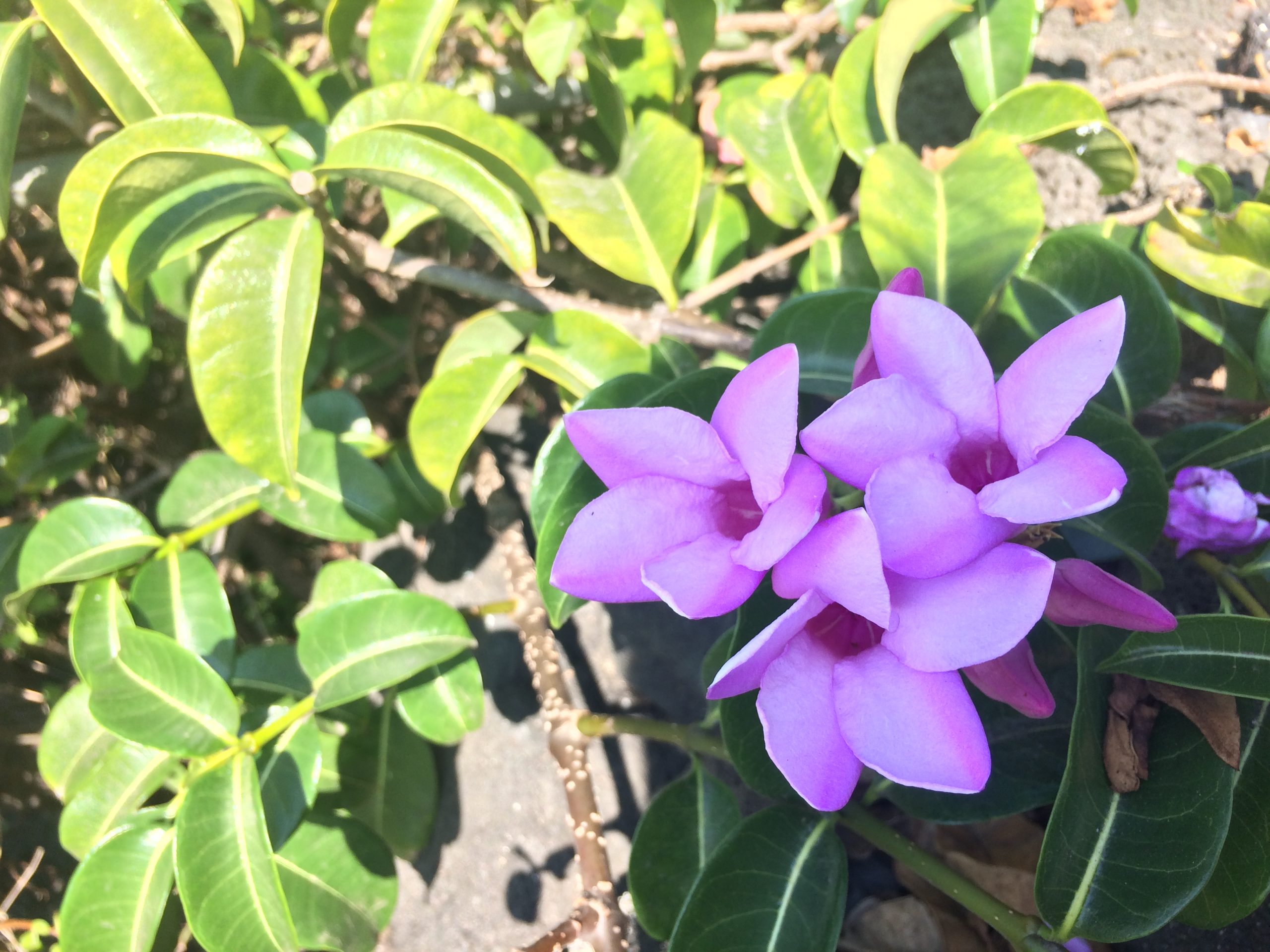
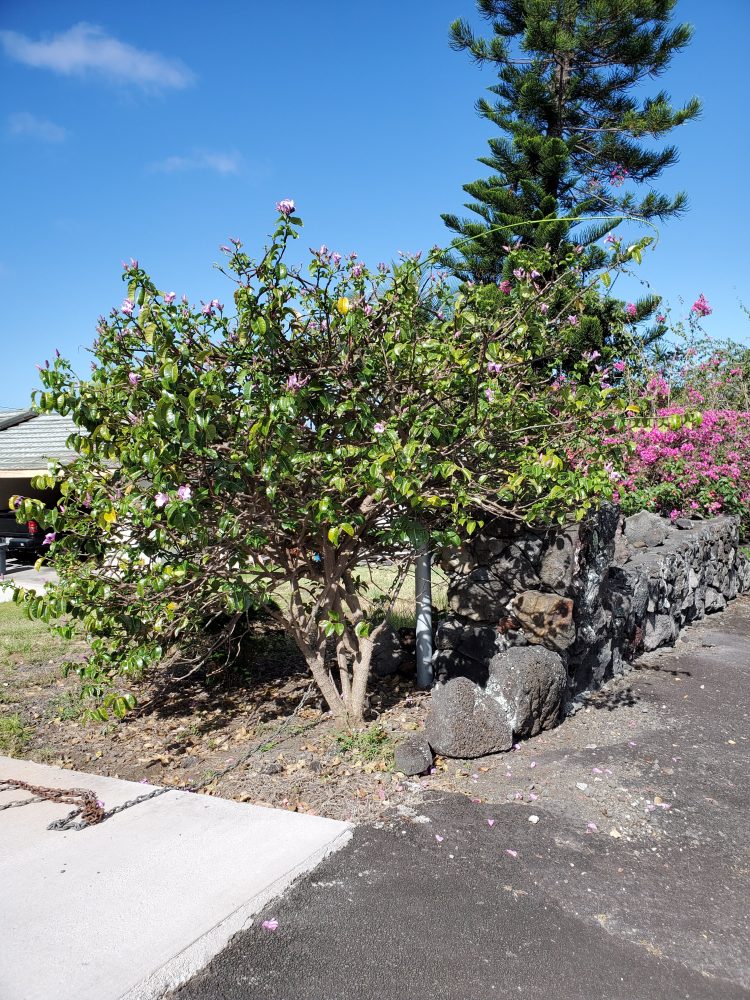

Photos: BIISC
BIISC’s Control Efforts
BIISC is on target to eradicate rubber vine by 2025. However, as new adults are found, the timeline could be extended. Every time a new adult plant is located and removes, BIISC must conduct follow-up surveys for at least four years to ensure no keiki are germinating. Please let us know if you spot one!
Historical populations were removed from Spencer Beach Park and Kekaha Kai State Park. The last remaining adult populations were removed from Puako in 2020. In addition, numerous private homes in Hilo and Kona enthusiastically agreed to let BIISC staff remove them. In many cases, the homeowner was treated to a similar, noninvasive plant as a trade.
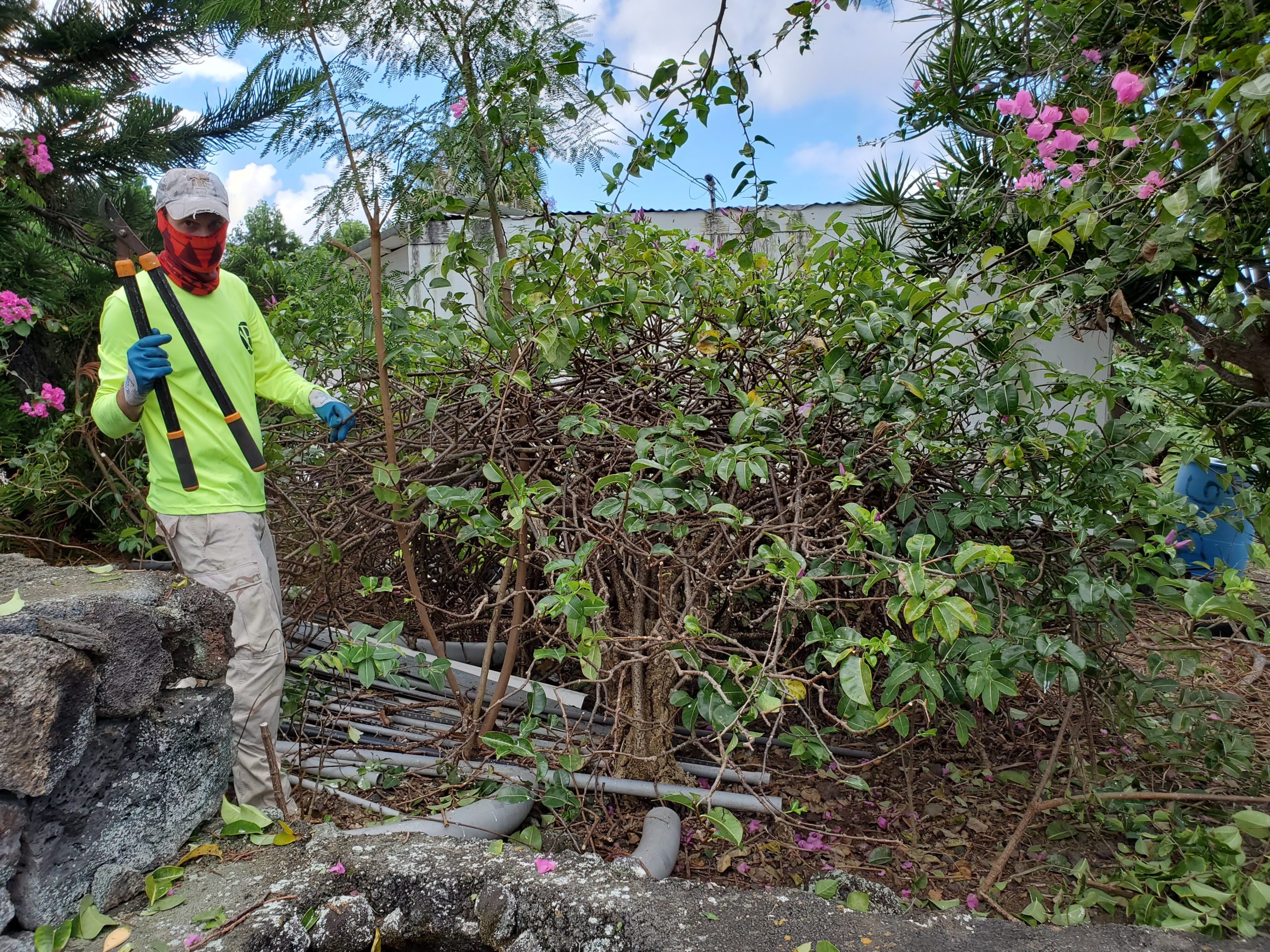
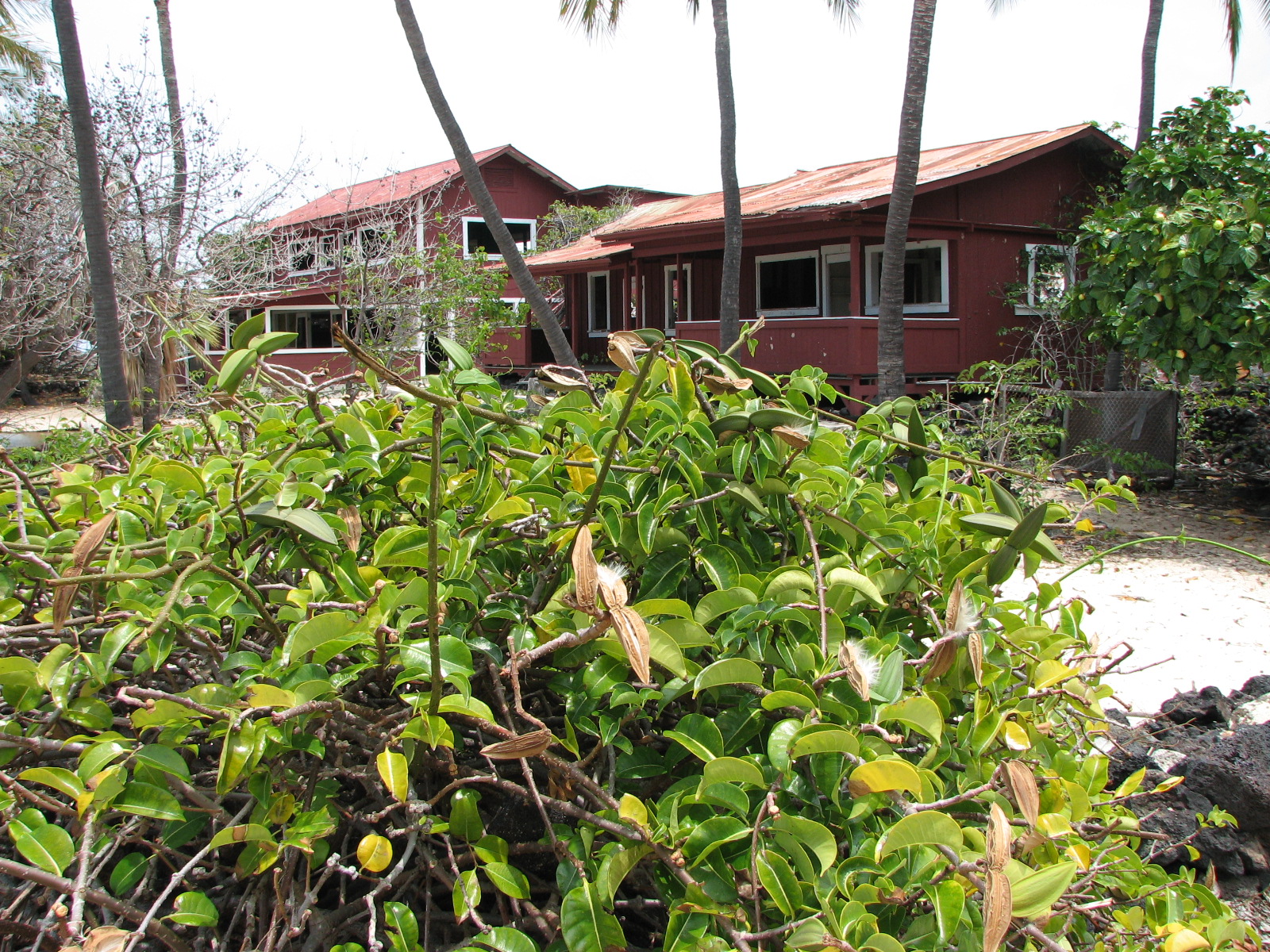
Noninvasive shrubs were planted after staff removed this invasive plant.
